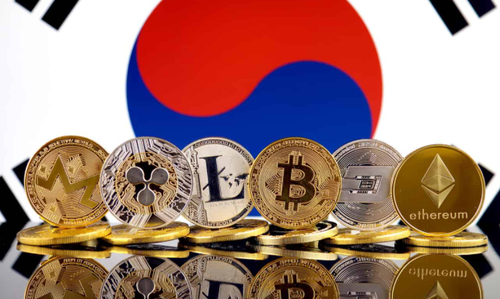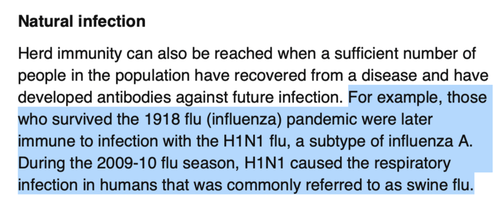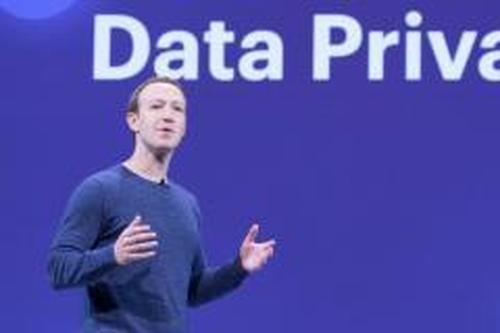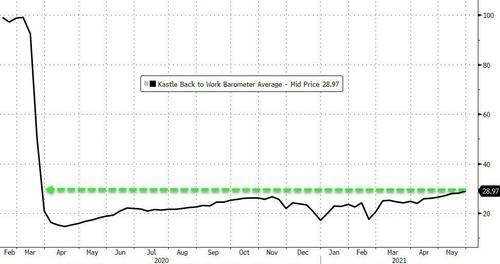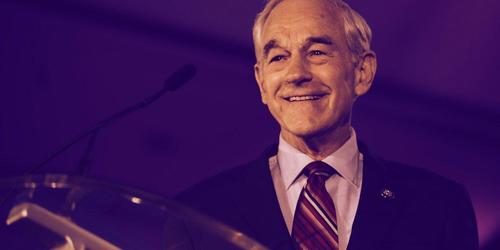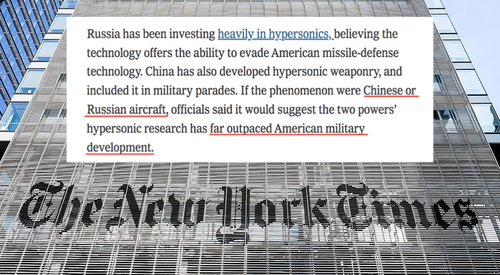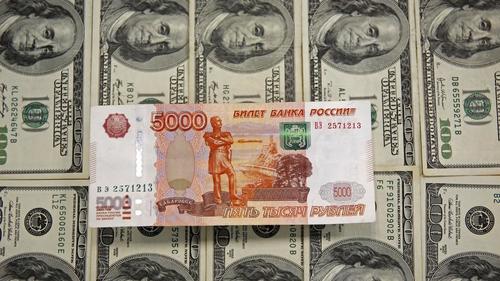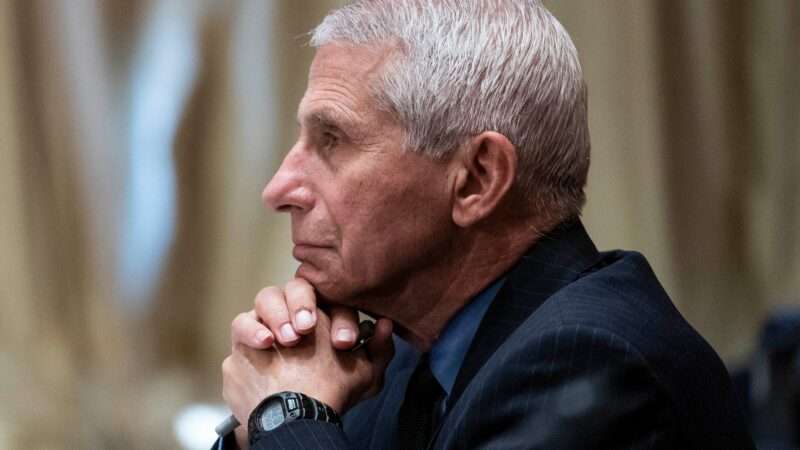Face mask skeptics are presenting a February 2020 email from Anthony Fauci, the federal government’s leading COVID-19 adviser, as evidence that he “lied” about the effectiveness of masks in preventing infection by the coronavirus. Fact-checkers, in turn, are accusing those skeptics of falsely portraying Fauci’s shifting advice on this subject as disingenuous. The truth lies somewhere in between: While both Fauci’s initial doubts about the value of face masks and his subsequent strong endorsement of them seem to have been sincere, his explanation of the shift was misleading.
USA Today says the claim that Fauci was dishonest “lacks context.” But that context shows Fauci changed his position on face masks without offering a satisfying reason. It is not surprising that his shiftiness on this point has reinforced the suspicions of people who always thought “face diapers” were a silly exercise in moral signaling and social control.
To be clear: I am not one of those people. But in their eagerness to defend Fauci, mainstream journalists are whitewashing his implausible explanation for changing his mind about a precaution he once dismissed as little more than a placebo for COVID-19 anxiety.
In a February 5, 2020, email exchange that The Daily Beast recently obtained under the Freedom of Information Act, former Secretary of Health and Human Services Sylvia Burwell asked Fauci, who directs the National Institute of Allergy and Infectious Diseases, whether he thought she should take a face mask with her to the airport during an upcoming trip. Fauci’s reply:
Masks are really for infected people to prevent them from spreading infection to people who are not infected rather than protecting uninfected people from acquiring infection. The typical mask you buy in the drug store is not really effective in keeping out virus, which is small enough to pass through the material. It might, however, provide some slight benefit in keep out gross droplets if someone coughs or sneezes on you. I do not recommend that you wear a mask, particularly since you are going to a very low risk location.
That advice is consistent with what Fauci was saying publicly in the early months of the COVID-19 pandemic. “There’s no reason to be walking around with a mask,” he said during a March 8, 2020, interview with 60 Minutes. “When you’re in the middle of an outbreak, wearing a mask might make people feel a little bit better, and it might even block a droplet. But it’s not providing the perfect protection that people think that it is. And often, there are unintended consequences. People keep fiddling with the mask, and they keep touching their face…When you think ‘masks,’ you should think of health care providers needing them.”
Fauci’s position also was consistent with early advice from the Centers for Disease Control and Prevention (CDC), which until April 2020 said only sick people and those caring for them needed to wear masks. It added that “facemasks may be in short supply and they should be saved for caregivers.”
The CDC, like Fauci and then–Surgeon General Jerome Adams, conflated two distinct issues: 1) whether general use of face masks was an effective way to curtail COVID-19 transmission and 2) whether the limited supply of surgical masks and N95 respirators should be reserved for health care workers. Adams illustrated that conflation in a tweet he posted a few weeks after Fauci’s exchange with Burwell: “Seriously people—STOP BUYING MASKS! They are NOT effective in preventing [the] general public from catching #Coronavirus, but if healthcare providers can’t get them to care for sick patients, it puts them and our communities at risk!”
As critics noted at the time, the implication that face masks protect health care workers from COVID-19 but somehow don’t protect the general public was scientifically implausible. If there was enough evidence to think that wearing masks was a sensible safeguard for people who came in close contact with COVID-19 patients, there was enough evidence to think it was a sensible safeguard for people who might unwittingly come into close contact with coronavirus carriers. And if it made sense for COVID-19 patients to protect others by wearing masks, it was logical to think that people who might be infected by the virus without realizing it—pretty much anyone, in the absence of readily available COVID-19 tests—should wear masks too.
When the CDC began recommending general mask wearing in public places on April 3, 2020, in fact, it emphasized the risk of asymptomatic transmission. But this was not a newly discovered risk. It had been known for months that the mean COVID-19 incubation period was five or six days, and there had been several reports indicating that a substantial share of people infected by the virus never develop symptoms, meaning that carriers who did not feel sick could still spread the virus.
If face masks were useless in reducing the risk of virus transmission, of course, none of that really mattered. The evidence on that point was limited and mixed in early 2020. But laboratory studies had confirmed the commonsensical assumption that face masks block at least some respiratory droplets, as Fauci conceded on 60 Minutes and in his email to Burwell, although they clearly do not provide “perfect protection,” as Fauci also noted.
An experiment described in the Journal of Hospital Infection exposed a “dummy test head” fitted with various kinds of surgical masks to live influenza virus. “The data indicate that a surgical mask will reduce exposure to aerosolised infectious influenza virus,” the researchers reported in 2013. “Reductions ranged from 1.1- to 55-fold (average 6-fold), depending on the design of the mask.”
Even homemade masks offer some protection, a study published the same year found. Surgical masks and homemade masks both “significantly reduced the number of microorganisms expelled by volunteers, although the surgical mask was 3 times more effective in blocking transmission than the homemade mask,” the researchers reported in the journal Disaster Medicine and Public Health Preparedness. “Our findings suggest that a homemade mask should only be considered as a last resort to prevent droplet transmission from infected individuals, but it would be better than no protection.”
In late June 2020, about three months after the CDC started recommending general mask wearing, six COVID-19 researchers published a systematic review and meta-analysis of the evidence supporting that practice in The Lancet. “Face mask use could result in a large reduction in risk of infection,” they reported, although they expressed “low certainty” in that conclusion. They noted that “N95 or similar respirators” were more strongly associated with risk reduction than cloth masks. The evidence was limited to observational studies, since the authors found “no randomised controlled trials.” But overall, they concluded, the data “suggest that wearing face masks protects people (both health-care workers and the general public) against infection.”
Around the same time, a study in the Proceedings of the National Academy of Sciences looked at COVID-19 trends in New York City, Italy, and Wuhan, China, from January 23 to May 9, 2020. The researchers concluded that “wearing of face masks in public” is “the most effective means to prevent interhuman transmission.”
As of May 22, 2020, a June 2020 Health Affairs study estimated, “more than 200,000 COVID-19 cases were averted” thanks to face mask mandates in the United States. A November 2020 study in the CDC’s Morbidity and Mortality Weekly Report similarly concluded that “countywide mask mandates appear to have contributed to the mitigation of COVID-19 transmission.” In a preprint study last month, by contrast, University of Louisville biologist Damian Guerra and biochemist Daniel Guerra found that “case growth was not significantly different between mandate and non-mandate states at low or high
transmission rates,” while mask use (based on survey data) “predicted lower case growth at low, but not high transmission rates.”
Overall, the case that wearing face masks helps reduce coronavirus transmission is stronger now than it was at the beginning of the pandemic. But evolving science on the effectiveness of face masks does not explain why the CDC and Fauci changed their minds in early April 2020, and neither does the risk of asymptomatic transmission, which was recognized months before.
When the CDC began recommending general mask wearing, so did Fauci. “If everybody does that, we’re each protecting each other,” he told PBS that day. “There should be universal wearing of masks,” he told ABC News in August. “If you look at the scientific data, the masks clearly work,” he told CNN the following month.
In a July 2020 interview with The Washington Post, Fauci explained his conversion this way: “Back then, the critical issue was to save the masks for the people who really needed them, because it was felt that there was a shortage of masks. Also, we didn’t realize at all the extent of asymptomatic spread.”
But “as the weeks and months [went] by,” Fauci said, federal health officials realized “there wasn’t a shortage of masks,” especially given the availability of “plain cloth covering[s].” At the same time, “we fully realized that there were a lot of people who were asymptomatic who were spreading infection.” Both of those explanations are suspect.
While Fauci had previously mentioned that health care workers needed masks, he had also counterintuitively suggested that masks did not work. He especially dismissed the value of “the typical mask you buy in the drug store,” which implied that DIY “cloth covering[s]” were even less useful. And while Fauci told the Post “we didn’t realize at all the extent of asymptomatic spread,“ there was plenty of reason to worry about asymptomatic transmission well before he and the CDC changed their advice.
A January 30 letter to The New England Journal of Medicine, based on several cases in Germany, warned that “asymptomatic persons are potential sources of [COVID-19] infection.” A February 13 letter to the International Journal of Infectious Diseases estimated that 31 percent of people infected by the COVID-19 virus did not have symptoms. A research letter published in The Journal of the American Medical Association on February 21 described an asymptomatic carrier from Wuhan who seemed to have infected four other people. A February 26 Global Biosecurity report noted that “asymptomatic transmission has been documented” and “the viral load in symptomatic and asymptomatic people is not significantly different.”
Even without asymptomatic cases, it was clear that presymptomatic transmission was a problem, given an incubation period that was estimated to be as long as two weeks. So that explanation does not hold water either.
Politifact labels the claim that Fauci “lied” when he changed his advice as “false.” But it seems fair to say he was less than completely candid about the reasons for his initial position and the reasons for abandoning it.
from Latest – Reason.com https://ift.tt/3vVwE9E
via IFTTT

